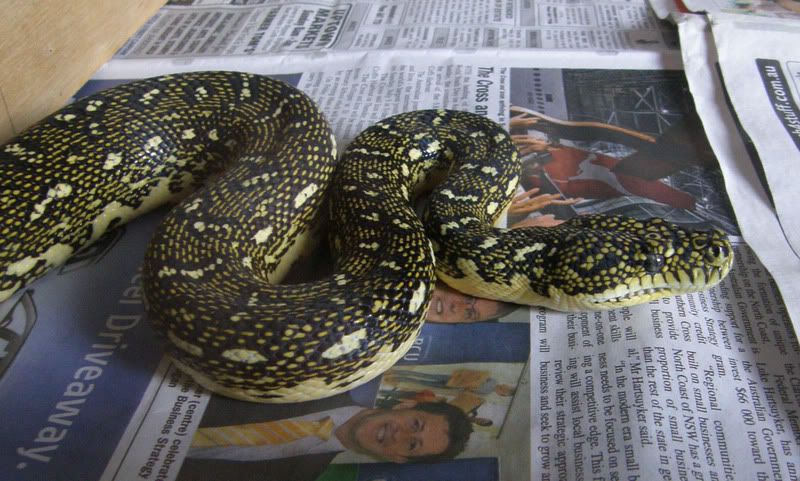MatE
Very Well-Known Member
here is my coastal intergrade ENJOY.Nice looking intergades to lol.


Last edited:


There is a few striped Bredli going around now.. Nice animal too.
Hi Steve,
Yeah there's a few striped bredli going around "NOW", also some cape yorks and darwins and prossies ect (striped) so I don't see any reason why in doubt that it can be achieved in pure diamonds.
A decade ago it's very uncommon to come across striped carpets, just because not as many herpers back then like we have now, more people are keeping and breeding(so we just bound to see more differnt stuff out there), internet and forums like APS bring us all herpers together and that's a great way to nework unlike before that we were restricted to our local herp meetings and same as the restriction to see other animals.saying that we will see more "MORPHS" coming out in the near future from different species of morelia.(does'nt mean they are hybrids)
IMO not because it's different or has striped it automatically qualifies as an intergrade or hybridsI suppose we got used to seeing some animals as in there "CLASSIC" look and we got used to that and when we see species that's a little different( like daves woma thread) we start to think Hey that can't be right or pure because that's not what we use on seeing(which is fair enough in some extent)
Our hobby is changing in some ways whether we like it or not and there will always be a divided opinions.
Just my two cents....
Have a good day.
Joel
Nice colour terrible rosettesthis is another one of matthew Bonnetts line of gosfords golds its not a great picture it is very bright yellow in the light

Well the hatchlings Boa has are not the result of incubation. Are you saying your one there WAS the result of it? Would be much easier to believe! haha.
On another note, any luck tracking those f$@%%^! down??
IMO not because it's different or has striped it automatically qualifies as an intergrade or hybridsI suppose we got used to seeing some animals as in there "CLASSIC" look and we got used to that and when we see species that's a little different( like daves woma thread) we start to think Hey that can't be right or pure because that's not what we use on seeing(which is fair enough in some extent)
Thanks Serp. Means a lot coming from you.
STILL no one can tell me how you tell a Diamond from an Intergrade... Funny that.
As noted, the ONLY difference is the pattern. So you can tell me what ever story you like, there still not a Diamond, according to the way we classify a diamond python.
BUT, to me there is a clear difference between a Diamond and an Intergrade, how on earth half the people on here can still claim they are Diamonds I will never know, but quite clearly you haven't read a book on them lately...
Hi Steve,
Perhaps not many people here feels qualified enough to make that call that is why you have'nt had any replies. You sound confident enough and convinced to say that the only difference is pattern so why worry about other peoples opinion.
I'm not brave enough to make any assumption instead will keep an open mind, I remember one reputable good breeder making a comment on some prossie stripe, he reckons that he used to stay on that area for herping and not once he's seen a striped prossie, therefore his conclusion is that they are HYBRIDSunfortunately books and experience are not always right but a good guidance for sure , after all we are still ALL learning and will always have something new to learn, I do take your point though and as I mentioned earlier this will always be and will stay as a divided opinions that is luckily enough we are all entitled to
What gets me is when someone is confident enough to make a call on such a sensitive topic.
Regards,
Joel
Enter your email address to join: